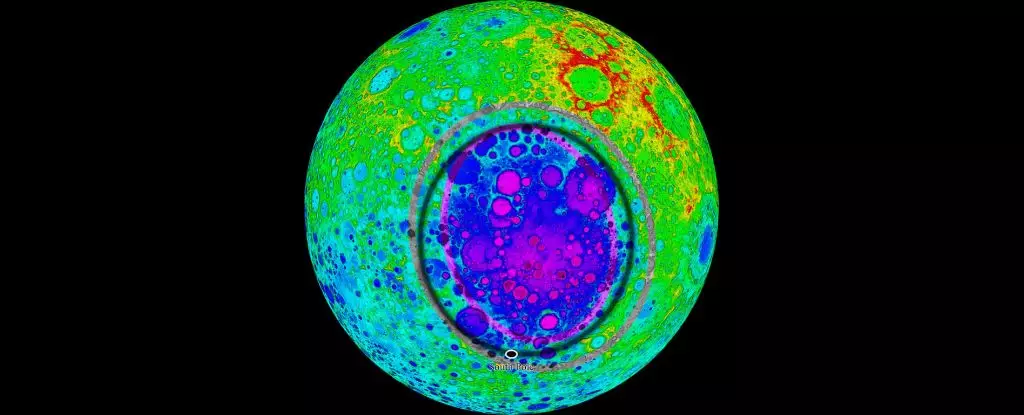The Moon, Earth’s singular natural satellite, is a silent witness to the Solar System’s tumultuous past, etched with a timeline of impacts spanning billions of years. Among its many features, the South Pole-Aitken basin stands out as a colossal testament to a history marked by celestial collisions. This immense crater, one of the largest in the entire Solar System, has long been relegated to the scientific background due to its size and the complexities that its study entails. Recent research initiatives suggest that our understanding of this remarkable feature is evolving, potentially reshaping future lunar exploration.
The sheer dimensions of the South Pole-Aitken basin are staggering; it measures an astonishing 2,500 kilometers (1,550 miles) in diameter and comprises nearly a quarter of the Moon’s surface. Its formation dates back over 4 billion years, which has made it significantly challenging to analyze comprehensively. As time has rolled on, numerous subsequent impacts have obscured the crater’s primary features, making it difficult to discern the original characteristics of this ancient site. Researchers adapting to these challenges are now equipped with advanced tools such as NASA’s Lunar Reconnaissance Orbiter, which has been collecting geological data since its launch in 2009.
Previously, scientists believed the South Pole-Aitken basin was formed by an oblique impact from a large object, resulting in an oval-shaped crater and a debris field that primarily spread in one direction. However, recent studies led by geologists, including Hannes Bernhardt from the University of Maryland, challenge this axiom. The researchers focused on analyzing over 200 mountainous features surrounding the basin, hypothesizing that they could be remnants of the original crater rim. To their surprise, data revealed a far more circular formation than expected. This reinforces the probability that the impacting body struck at a more vertical angle, akin to dropping a stone straight down onto a surface.
Such a realization has profound implications for how we interpret lunar geology. It suggests that rather than a lopsided distribution of debris, a more symmetric eruption of materials occurred, potentially allowing astronauts and robotic explorers to access parts of the Moon that reveal its primordial nature.
The implications of a more uniform debris distribution are far-reaching. If the circular impact hypothesis holds, it offers a tantalizing prospect: missions to the South Pole may access rocks that originated deep within the Moon’s mantle and crust. The Moon’s lack of active geological and atmospheric weathering means that ancient materials have remained largely untouched, offering insights into its formation processes—details that have perplexed scientists for generations.
Current theories suggest that the Moon may have formed from debris ejected during a cataclysmic collision between the Earth and a Mars-sized body, known as Theia. Yet alternative scenarios, such as gradual accumulations of materials over time or even gravitational captures, continue to circle within scholarly discussions. Access to pristine samples could lend credence to one hypothesis over another and refine our understanding of this cosmic neighbor.
Further investigation reveals even more unexpected findings. Data have indicated that beneath the basin lies an anomalously dense layer of crust compared to the surrounding areas. One compelling explanation for this higher density is the notion of a significant asteroid fragment buried deep within the basin. Exposing these minerals, locked away for billions of years, could yield new insights into not only the Moon’s history but also into the processes that shaped early planetary bodies in our Solar System.
Bernhardt asserts, “One of the most exciting implications of our research is how it applies to missions to the Moon and beyond.” As space agencies prepare for future exploration in the ever-advancing quest to return humans to the lunar surface, understanding the South Pole-Aitken basin could morph into a centerpiece of lunar research.
The Moon is not merely a barren rock in the sky; it is a historical archive that holds clues to understanding the cosmos. The renewed focus on the South Pole-Aitken basin serves as an invitation for scientists and explorers alike, promising untold discoveries about our celestial companion. As research progresses, we inch closer to unveiling the intricate narrative of the Moon’s history, inviting delving into the questions that have lingered for decades and inspiring future lunar missions that may redefine our understanding of the Solar System.


Leave a Reply